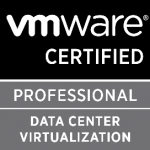For a list of all objectives see the VCP5 page.
Objective 5.2 – Plan and Implement VMware Fault Tolerance
See also this similar post: VCP 5 – Objective 5.2 – Plan and Implement VMware Fault Tolerance
Note that VMware FT is quite still the 1.0 version with the same constraints of a vSphere 4.1 version.
Identify VMware Fault Tolerance requirements (same as vSphere 4.x)
See the vSphere Availability guide (page 38) and VMware KB: Processors and guest operating systems that support VMware FT. To check the requirements, there is also a specific tool: VMware SiteSurvey utility.
Configure VMware Fault Tolerance networking (same as vSphere 4.x)
See the vSphere Availability guide (page 41). A good practice is use a dedicated vmkernel interface enable to FT logging on a dedicated pNIC. Network bandwidth is important to define how much VMs can be protected.
Enable/Disable VMware Fault Tolerance on a virtual machine (same as vSphere 4.x)
See the vSphere Availability guide (page 45). Study also the different reason on why a VM is in a non protected status (page 46).
Test an FT configuration (same as vSphere 4.x)
See VMware KB: Testing a VMware Fault Tolerance Configuration.
Determine use case for enabling VMware Fault Tolerance on a virtual machine (same as vSphere 4.x)
See the vSphere Availability guide (page 37). Remember the limit of one vCPU.











